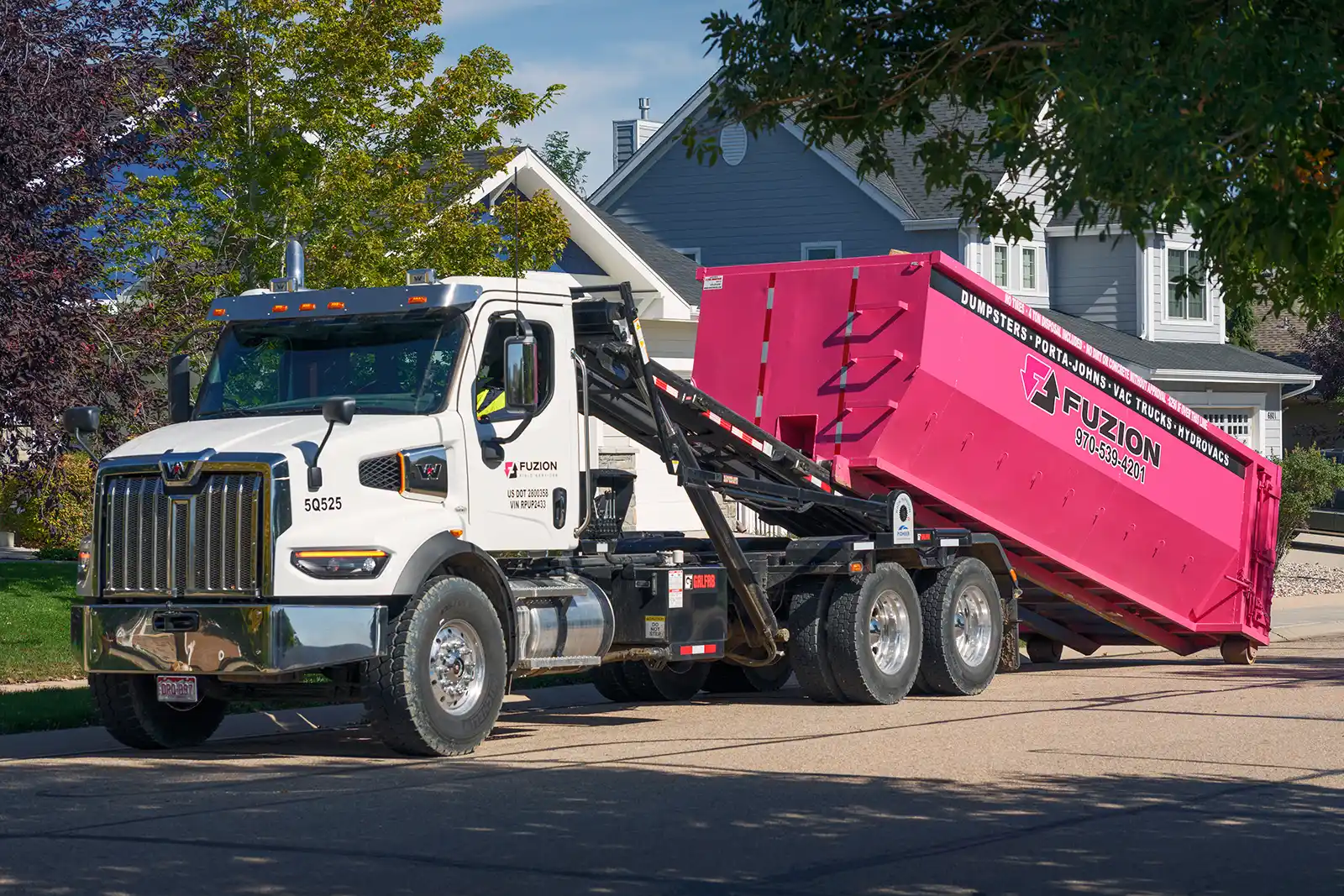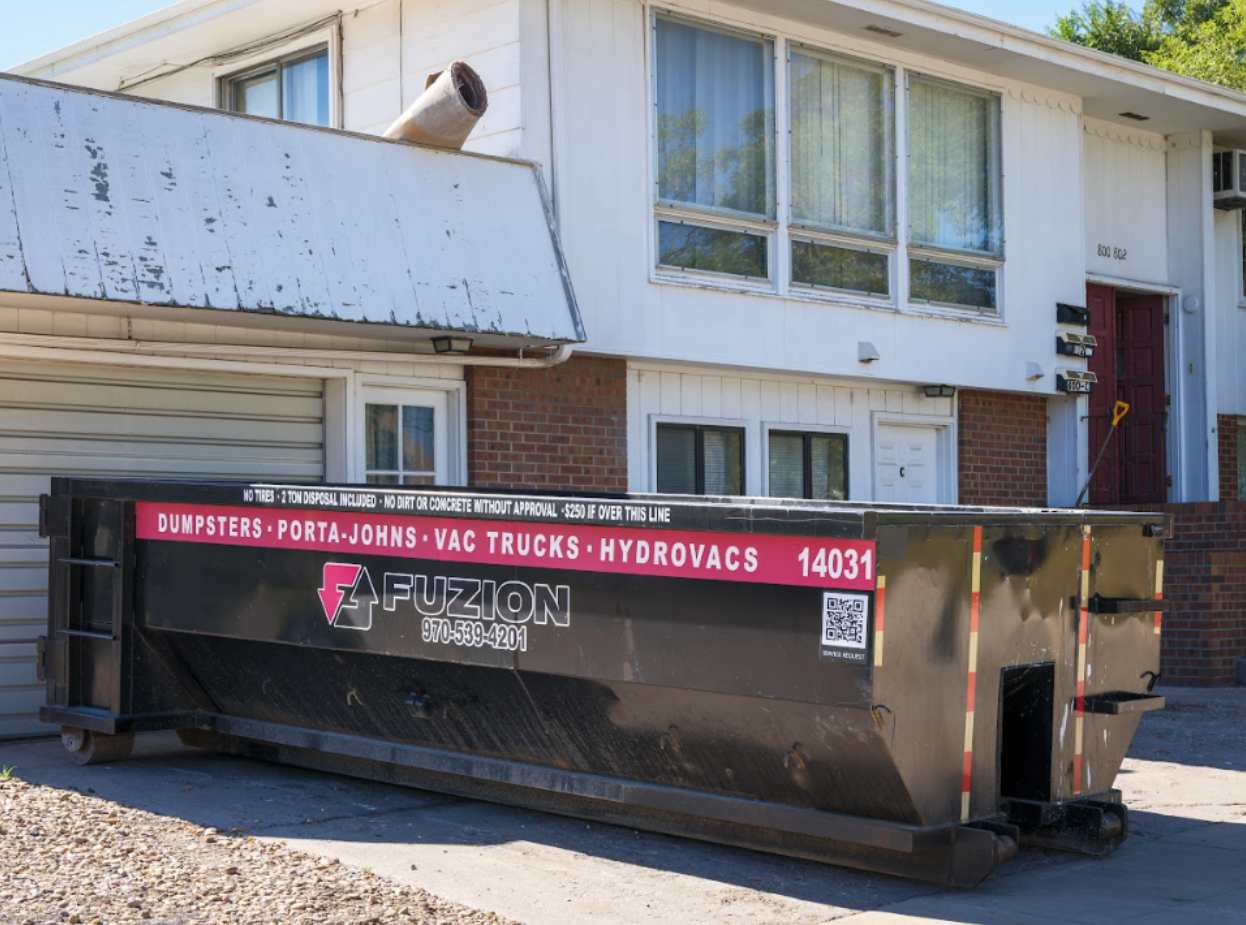Roofing Dumpster Rental Services
- Blog
Roofing tear-offs generate dense, high-volume waste that can quickly overwhelm a jobsite. Without the right disposal strategy, even a simple shingle removal can lead to costly delays and compliance issues. A roofing dumpster rental keeps material flow under control—matching bin size, weight limits, and scheduling needs to the project scope.
Choosing a Dumpster Size Based on Roof Load Calculations
The first step in selecting a roofing dumpster rental is understanding how much material will come off the roof.
Measuring Roof Area and Shingle Layers
Roof size is measured in “squares,” where one square equals 100 square feet. Projects may involve stripping one or more layers of shingles, each adding to the volume and weight of waste.
Weight Estimates by Shingle Type
Different materials generate different loads. For example:
- Three-tab asphalt shingles: 250–300 lbs per square
- Architectural shingles: 400–450 lbs per square
- Slate or tile: 700–1,000+ lbs per square
Don’t forget to account for underlayment, nails, and membrane layers. These can add 10–20 pounds per square to the total debris weight.
| Shingle Type | Weight per Square (lbs) | Squares per 10 yd Dumpster | Squares per 20 yd Dumpster |
| Asphalt (3-tab) | 250–300 | 25–30 | 50–60 |
| Architectural Asphalt | 400–450 | 20–25 | 45–50 |
| Slate or Concrete Tile | 700–1,000+ | 10–15 | 20–30 |
To estimate total debris weight, multiply squares by pounds per square and divide by 2,000 to convert to tons. That’s why choosing the correct roofing dumpster rental based on material density and square count is critical to avoid excess weight or multiple bin swaps.
Avoiding Overloads and Hauling Delays
Dumpster size isn’t just about volume—it’s about weight. A 10-yard container might physically hold 30 squares of lightweight shingles, but denser materials could push it over the legal 2–3 ton limit.
For example, removing 2,000 square feet of roof with two layers of architectural shingles could generate 4,000 to 4,500 lbs—over 2 tons. That requires a 15- or 20-yard container to avoid overage fees and rejected pickups.
The Risk of Improper Load Planning

Failing to match dumpster size to load weight can disrupt your entire schedule.
Pickup Delays and Overage Charges
Overages can quickly drive cost overruns. For instance, if your load exceeds the 2‑ton limit on a 10‑ or 15‑yard dumpster by 1,000 pounds, you’ll trigger a per‑ton overage fee plus potential trip charges. Right-sizing bins and tracking material weight up front ensures you avoid these avoidable expenses.
Transport Safety and DOT Compliance
Overloaded bins pose serious risks on the road. Shifting debris during transit can lead to Department of Transportation (DOT) violations or even rejected dumps at receiving facilities. Balanced, legal loads reduce these risks.
Scheduling and Placement for Efficient Tear-Offs
Smart dumpster placement and timing streamline the entire tear-off operation.
Syncing Drop-Off with Crew Workflow
The dumpster should arrive just as tear-off begins—not earlier when it blocks equipment, or later when piles start forming. Proper timing prevents material pileups and keeps crews moving.
Drop Zones, Driveway Protection, and HOA Rules
Place containers as close to the roofline or chute zone as possible. In residential areas:
- Use plywood or mats to protect driveways
- Confirm bin spot with crew lead prior to delivery
- Avoid low-hanging branches or eaves
- Allow room for bin door swing if loading from the ground
- Check with your homeowners association (HOA) to confirm any restrictions on bin placement duration, visible hours, noise limits, or required permits for curbside delivery.
Load Separation and Material Handling Rules
Roofing materials are classified separately from general construction debris. Most landfills require clean loads for standard rates.
Keeping Shingles Separate
To qualify as a clean roofing load, bins must exclude insulation, packaging, or structural wood. Mixed debris may trigger higher fees or even rejection at the dump.
Documenting Loads for Audits
Disposal documentation isn’t optional—especially for large or public jobs. Label bins properly, track hauls, and retain manifests. These records support final inspections and regulatory audits.
If you’re unsure about local policies, a quick search for roofing waste disposal near me can identify nearby facilities and tipping guidelines.
Adjusting Dumpster Rental to Match Project Type

Every roof tear-off has different requirements based on timeline, size, and turnover.
Empty-and-Return Models
Longer jobs often require a recurring roofing dumpster rental with scheduled empty-and-return service to maintain jobsite momentum and avoid overflow delays.
Multiple Bins for Multi-Roof Projects
A commercial site or multi-structure job may require several containers staged at different zones. Match container size and delivery timing to each area’s pace of removal.
On large properties, 30-yard dumpsters may be appropriate for high-volume or multi-structure disposal needs. Just be sure to confirm load limits and turnover timing to avoid congestion or delays.
Cost Planning Based on Debris and Risk
Roofing dumpster rental rates typically include a base weight threshold. Exceed that, and overage charges kick in—usually billed by the ton.
Budgeting by Square
To build an accurate estimate:
- Multiply projected debris per square
- Factor in shingle type and layers
- Add expected bin swaps
When budgeting for a roofing dumpster rental, teams should consider both debris weight and bin turnover frequency to avoid underestimating true removal costs. This gives a per-square disposal cost that’s realistic and trackable. For a more complete approach, Fuzion also offers guidance on how to get rid of construction debris by job type.
Get Reliable Roofing Waste Control with Fuzion Field Services
Fuzion Field Services delivers roofing dumpster rental programs built for load-heavy, fast-moving jobs. We match bin size to roof specs, schedule delivery to keep crews moving, and document every haul for full compliance. Contact us today to customize your service plan.